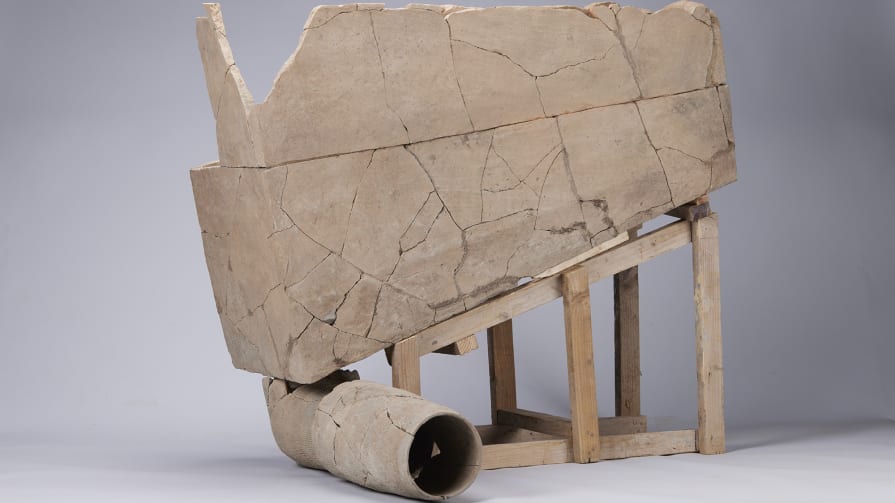2,400-year-old flush toilet unearthed in China could be one of the world's oldest
The toilet was found in the Shaanxi province's Yueyang City Ruins and was likely used by high-ranking officials during the early years of China's first unified empire.

Archaeologists in China have discovered one of the world's oldest flush toilets, a "luxury object" that was likely used by elite individuals just as China was consolidating into a unified and powerful empire.
Likely dating to between 2,200 and 2,400 years ago, the toilet — consisting of a bowl and pipes leading to an outdoor pit — was unearthed in the ruins of the palace in Yueyang City Ruins, an archaeological site in Xi'an, the capital of Shaanxi province in central China.
The ancient lavatory was likely used by high-status officials throughout China's Warring States Period (475 B.C. to 221 B.C.), when rival states fought one another for dominance and territorial control, until the Qin state emerged victorious. The first emperor of the Han dynasty, which followed the Qin dynasty, likely also used the commode about 2,200 years ago. The researchers added that the toilet didn't flush automatically; servants poured water into the bowl after each use.
Related: Who invented the toilet?
"It is the first and only flush toilet to ever be unearthed in China," Liu Rui, a researcher at the Institute of Archaeology at the Chinese Academy of Social Sciences, told the news site China Daily. "Everybody at the site was surprised, and then we all burst into laughter."
The first modern manual flush toilet was invented in England in 1596 by Sir John Harington, a godson of Elizabeth I. Made up of a raised cistern that released water through a downpipe to flush away waste, Harington's invention was constructed only twice — once for his own use and once for the queen, and the device notoriously lacked an S-bend to prevent smells from wafting back into the room.
The oldest toilets on record were simple contraptions — pits lined with hollow ceramic cylinders — dating to about 5,000 years ago in Mesopotamia, Nature magazine reported. Other excavations have dated toilets in Neolithic Scotland to 3000 B.C. and a public toilet system from the palace of Knossos, built by the Minoan civilization on the island of Crete, to around 1700 B.C. The toilets consisted of large earthenware pans flushed with water to remove waste.
Sign up for the Live Science daily newsletter now
Get the world’s most fascinating discoveries delivered straight to your inbox.
Discovered in the 1980s, Yueyang's palace ruins were part of the former capital of the Qin state, which swiftly conquered China's other six states to form the first unified Chinese empire toward the end of the third century B.C.
To get to the bottom of the era's people and their diet, the researchers plan to test the toilet for feces. They will also look for the toilet's upper half to establish if it was intended to be used while sitting or standing.
"The flush toilet is concrete proof of the importance the ancient Chinese attached to sanitation," Liu said. "Besides all written records, we can learn more about social reforms and systems of the kingdom by digging deeper into ancient palaces."

Ben Turner is a U.K. based staff writer at Live Science. He covers physics and astronomy, among other topics like tech and climate change. He graduated from University College London with a degree in particle physics before training as a journalist. When he's not writing, Ben enjoys reading literature, playing the guitar and embarrassing himself with chess.










